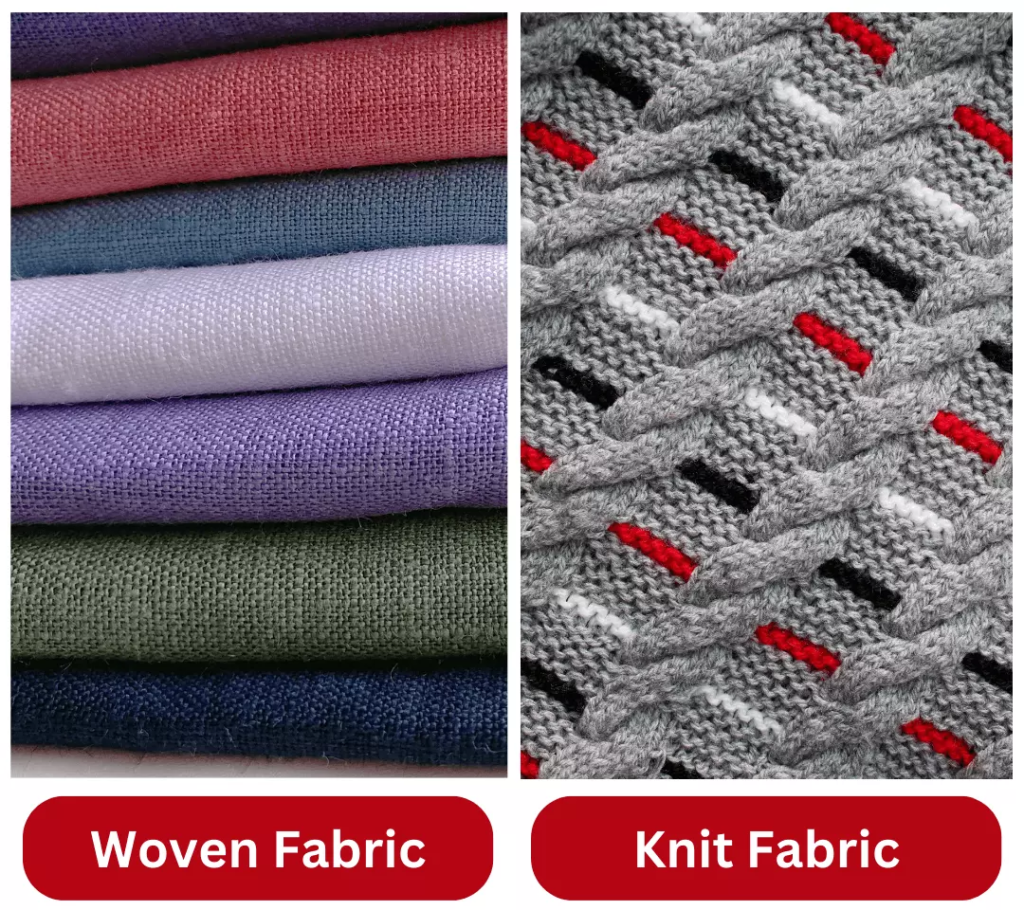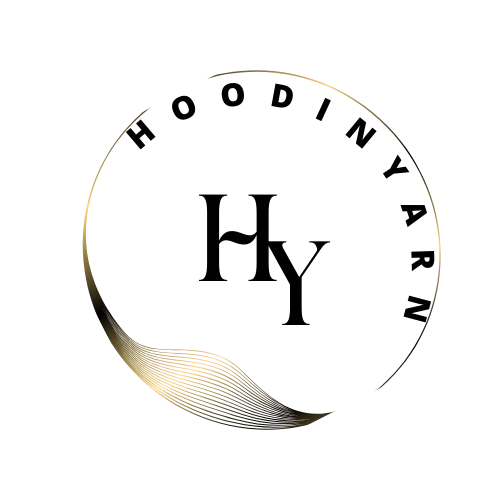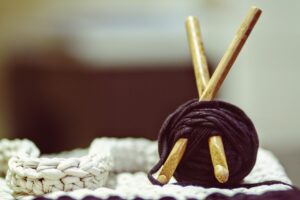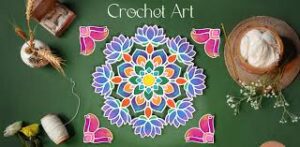
Knitted v/s Woven:
Many materials can be used to make fabric, such as cotton, rayon, spandex, lycra, and linen. Nonetheless, there are two primary categories of fabric preparation: knit and woven.
What Is a Knit Fabric?
A textile known as knit fabric is created by weaving yarn together using long needles. There are two types of knit fabric: warp knitting and weft knitting. Weft knitting involves knitting a fabric with back-and-forth loops, whereas warp knitting involves knitting loops that go up and down.
Knit fabric is used by producers to create garments such as cardigans, sportswear, leggings, socks, sweaters, sweatshirts, and t-shirts and other shirtings. Modern knit fabrics are mostly made by knitting machines, while the material can also be knitted by hand with knitting needles.

6 Characteristics of Knit Fabric
- Flexible and pliable. Knit fabric may expand in both breadth and length because it is formed by a sequence of loops. This kind of fabric is ideal for form-fitting, zipperless apparel. Because knit fabric has an elastic and unstructured feel, it can stretch or drape over most shapes.
- Resistance to wrinkles. Knit fabric is incredibly wrinkle-resistant because of its flexibility; if you ball it up in your palm and then release it, it should revert to its original shape.
- Moist. To the touch, most knit textiles are smooth. It will feel smooth if the cloth is tightly knit, and rough or ridged if the fabric is loosely knit.
- Simple to keep up. Knit fabric may be machine washed with ease and doesn’t need as much extra attention as hand washing does. This kind of fabric usually resists wrinkles, therefore ironing is not necessary.
- Damageable with ease. Knit fabric eventually starts to stretch out or pill after repeated use, making it less resilient than woven cloth.
- Tough to stitch. Compared to non-stretchy materials, knit fabric is much more difficult to sew (by hand or on a sewing machine) because it can be difficult to stitch straight lines without gathers and puckers.
13 Common Types of Knit Fabric

Common types of knit fabric include:
- Jersey knit: Originally created from wool, jersey is a smooth, elastic knit fabric. Currently, cotton, cotton mixes, and synthetic fibers are also used to make jersey. The back of the jersey knit fabric is covered with loops, while the right side is smooth and has a single, slight rib knit.
- Purl knit: One of the easiest knits to learn, purl knit is defined by little bumps instead of smooth edges for every stitch.
- Rib-knit: This type of knitting creates tight, stretchy rows by using lengthy, vertical columns of knit and purl stitches.
- French terry knit: This type of fabric features loops on one side and heaps on another. Because it is so soft and velvety, this fabric is frequently used to make robes.
- Double knit: This two-layer fabric has a smooth, slightly single-ribbed surface on both sides that is flat knit.
- Fleece knit: To produce a soft, fuzzy feel, fleece knit is a knit fabric that is typically brushed on one or both sides.
- Cable knit: The knitter creates raised motifs and patterns by crossing numerous layers of stitches over one another to create cable knit fabric. Sweaters are frequently made from this knit fabric.
- Interlock knit: An alternative to rib knit, interlock knit gives the cloth the right-side, smooth feel of flat knit on both sides.
- Jacquard knit: Using a knitting machine’s Jacquard controls, a fabric with a complex design can be knitted either single or double.
- Ponte knit: Typically made of a blend of polyester, rayon, and spandex, ponte knit is a double weave that is exceptionally elastic.
- Raschel knit: This type of warp knit has horizontal floats on the back and vertical loops on the right side.
- Tricot knit: Tricot knit is a knit fabric that has a smooth back and a zigzag texture on the right side.
- Velour knit: This kind of pile knit fabric has tiny loops that are sliced to give it a velvety, cozy texture.
What Is a Woven Fabric?

A textile made by weaving two sets of yarn together is called woven fabric. To generate woven fabric, manufacturers employ looms to weave together horizontal weft threads and vertical warp threads.
When examined closely, woven cloth has a checkerboard-like appearance with straight interlacing threads that cross over and beneath one another at right angles, much like a woven basket. A popular textile for structural pieces like coats and blazers as well as upholstery is woven cloth.
What Are the 3 Basic Types of Weaving Structures for Woven Fabric?
Whether it’s denim or flannel, poplin or chintz, every type of woven fabric is made using one of the following three weaving structures:
- Plain weave: This kind of cloth is woven with all of the threads running in a basic perpendicular pattern that resembles a plain checkerboard. Two popular varieties of simple weave fabrics are organza and chiffon.
- Twill weave: Also referred to as twill fabric, twill weaves have diagonally ribbed thread patterns. In twill weaving, one or more warp threads—the vertical thread held taut on a loom—are woven over by the weft thread, which is the horizontal thread, and then under by one or more warp threads. A notable example of this type of cloth is zigzag weaving, which resembles herringbone.
- Satin weave, which is characterized by either four or more weft threads crossing over one warp thread, or the other way around. Four or more weft yarns hover over a warp yarn, or the other way around, in this kind of woven fabric.
6 Characteristics of Woven Fabric
In general, woven fabric is:
- Very well-organized. Generally speaking, woven cloth is quite structured and does not drape softly around objects; instead, it holds its shape. Additionally, this type of fabric is not extremely elastic; if you tug on it, it will stay rigid.
- Vulnerable to folds and lines. Weaved fabric is more likely to retain creases and wrinkles because of its structure; therefore, regular ironing is necessary to keep it looking flawless.
- Frequently rough. The strands used to weave fabrics are frequently coarser than those used to knit them, giving woven fabrics a slightly rough texture.
- Sturdy. Woven cloth is incredibly resilient; it doesn’t pill and keeps its shape even after numerous washes.
- Simple to stitch. Weaved fabric is typically not extremely elastic, so sewing it together without puckers or gathers is simple.
- Pricey. Generally speaking, weaving fabric together takes longer than knitting. Because of this, woven fabrics—whether purchased as fabric or already turned into apparel—tend to be more costly.
15 Common Types of Woven Fabric

Common types of woven fabric include:
- Corduroy: Corduroy is a twill weave fabric, meaning that its vertical ribs are thick and the threads are woven together in diagonal lines. Thick, resilient, ridged, and warm, corduroy possesses the exceptional quality of seeming both elegant and comfortable at the same time.
- Denim: Denim is a twill-weave fabric that has a blue appearance because the weft yarn is sometimes weaved below two or three warp yarns. The warp threads are typically colored indigo, while the weft is left undyed.
- Flannel: Often rubbed on one or both sides (a process known as “napping”), this loosely woven twill or plain fabric raises fine strands and gives it an even softer texture. See our comprehensive guide here to find out more about flannel.
- Chiffon: Chiffon is a sheer, light-weight plain-weave fabric. Many synthetic and natural textile kinds, such as polyester, rayon, silk, and nylon, can be woven into the sheer fabric.
- Muslin: Muslin is a cotton fabric with a loose weave. A single weft thread alternates over and under a single warp thread when it is woven using the plain weave technique. Fashion prototypes are known to test patterns on muslin material before cutting and stitching the finished item.
- Buckram: Buckram is a fabric with a plain weave that can be woven tightly or loosely. The most popular application for the stiff, gritty fabric is inside baseball hats.7. Cheesecloth: Chefs utilize cheesecloth, a plain-weave cloth, as a tool while making cheese. The loose weave of the fabric makes it easy for fluids to pass through.
- Poplin: Made of coarser weft threads and much finer warp yarns, poplin is a plain weave fabric. This fabric has an airy, delicate drape and is incredibly lightweight.
- Chambray: Chambray is a type of plain-weave fabric that resembles denim in color because the weft is left uncolored while the warp threads are typically dyed indigo.
- Velvet: Two velvet pieces are created simultaneously on a unique loom called a double cloth. This opulent fabric can be woven with an additional set of sheared warp threads to produce a softer feel in any weave structure, such as satin, twill, or plain.
- Taffeta: A single weft thread crosses over and under a single warp thread to create a checkerboard pattern when taffeta is manufactured using the plain-weave technique. Taffeta is made by twisting the threads during the weaving process, giving the finished fabric its structure and rigidity.
- Organza: Originally woven from silk, organza is a sheer, light-weight fabric. Additionally, synthetic fibers, particularly polyester and nylon, can be used to make the material. Find out more information about organza in our complete guide here.
- Crêpe: Any weave structure (plain, satin, or twill) can be used to create this fabric. Since the strands in crêpe are specifically twisted or crimped, it creates an uneven, rough texture. The various varieties of crêpe are distinguished by the ingredients and texture-achieving techniques used in their creation.
- Georgette: Generally made of tightly twisted threads twisted in opposite directions, s- and z-weave, georgette is a simple weave fabric. The surface of the fabric develops tiny puckers as a result of these twists, giving Georgette her distinctively crinkled appearance.
- Cambric: To provide a smooth finish, Cambric is a tightly woven plain-weave cloth that is rolled and flattened at high temperatures.
How to Tell if a Fabric Is Knit or Woven

Here are a few ways to identify whether a fabric is knit or woven:
- Examine the threads. The individual threads that make up the fabric should be visible if you examine it closely. It is knitted if the threads seem to have loops; it is woven if the threads form a perpendicular crisscross pattern.
- Verify the stretch. Compared to woven materials, knit fabrics will stretch significantly more. Experiment with stretching the fabric in both length and width; if it resists stretching, it is probably woven.
- Apply the wrinkle test. Squeeze a small amount of the fabric into your hand’s palm. Whereas a woven cloth will hold on to its wrinkles and frequently stay slightly crumpled, a knit fabric will return to shape swiftly and with minimal wrinkling.
Related Article
Pros and cons of knitting




